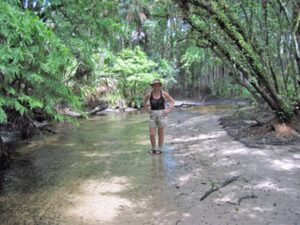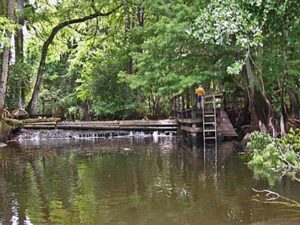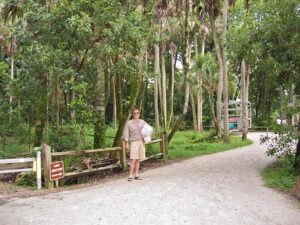
Ian and I set off for the Loxahatchee River, located in Martin County, just south of Vero Beach, the small Florida beach town where I grew up. This beautiful little 8 mile-long river runs through the Jonathan Dickinson State Park, and is the only Florida river to earn the 1985 distinction as an original Wild and Scenic River. (Similar to the St. Croix’s protection, see River #6.) We had arranged to rent a canoe from CANOE OUTFITTERS (561 – 746-7053) who explained that the river was so low that only a brief two mile section was still navigatable. We were instructed to paddle up to the spillway, then turn around and paddle back against the current — a current so mild due to low water that we would hardly notice, he assured us.
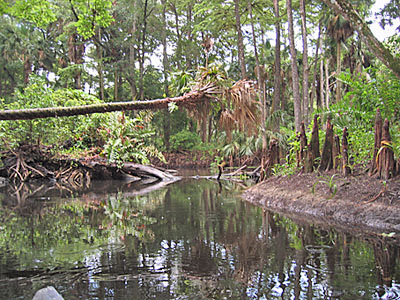
The white sandy path to the put-in was palm lined and cicadas rose and played their wild songs in the tangled woods as we passed. A gigantic black cloud bank towered over us, Florida style, and a light rain fell just as we arrived at the dark bank of the river. The rain cooled the hot, steamy air and we set out amid giant drops that made the huge overhanging elephant leaves bob as we paddled by. After a short paddle to a bridge the tree canopy closed over the river and the tropics sealed us off from the busy world.
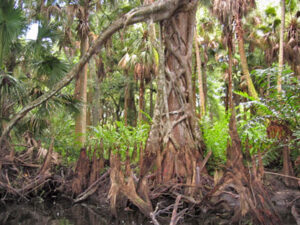
The river narrowed, twisted and turned. Palms arched and one had fallen perpendicular across the river. Giant ferns grew out from the bank, wild lily plants spiked and bloomed, and every black, wet log looked like an alligator. Up ahead a vine silently strangled a towering cypress tree, making us talk in a whisper when we passed. That was not the only thing that kept us quiet. The outfitter had said that the water level was three feet below normal but it had not registered until we found ourselves paddling beside giant cypress trees with all their “knee” roots exposed and evidence of the usual water mark on the huge trunk of the trees visible just over our heads. (Note the dark lines in all the pictures.) Three feet below normal! It would take several hurricanes and many years of steady afternoon rains to bring the water level back. The alligators that draped the banks on my last paddle here, four years ago, had disappeared, probably looking for more plentiful food elsewhere. In addition, it was the great American July 4th holiday and we threaded our way around a couple of canoes beached on the bank, the paddlers drinking themselves silly, loud, happy, and leaving trash. It made me deeply sad to find the water evaporating and the people careless. I felt like we were in a church that was disappearing, stone by stone, drop by drop.
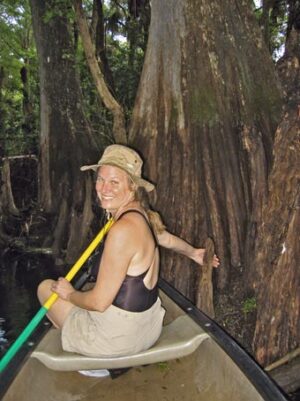
Florida is in a long drought and combined with a population explosion, the whispered water scarcity was suddenly very visible. We paddled back to the outfitter, stopping several times to pull the canoe over sand barely covered with flowing water. The outfitter had been right. There was no current to fight on the return trip. We
pulled our canoe over the spillway and paddled back with a bevy of older kayakers who told us about paddling the Everglades rivers. Would we find water there? I wondered.
